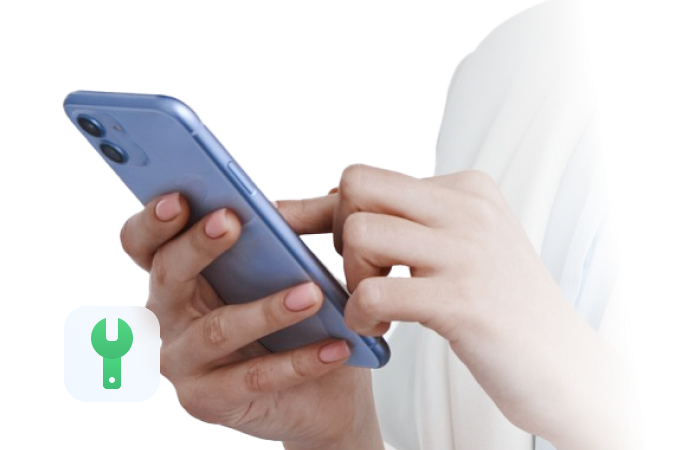
7 Ways to Fix iPhone Proximity Sensor by Yourself
Aug 27, 2025 • Filed to: Phone Repair Solutions • Proven solutions
"After updating to iOS 16, irrespective of whether I get a phone or not, the proximity sensor is ON always. When I am using an app, if I just hover my hand over the proximity sensor, the screen blacks out. Is anyone facing this issue???"

Do you encounter a similar issue (iPhone proximity sensor not working properly) as above? The proximity sensor is a valuable feature on iPhones that detects the presence of objects near the device. It plays a crucial role in various functions like automatic screen dimming during calls and preventing accidental touches. However, if you are experiencing issues with your iPhone's proximity sensor, such as inaccurate readings or unresponsiveness, it can disrupt your user experience. In this article, we will explore several effective ways to fix iPhone proximity sensor problems and restore its proper functionality!
Part 1. What is the iPhone proximity sensor?
Quality is a function of design. That sounds good, doesn’t it? All it means is that if an item, whether it be a car or something more mundane like a toaster, is designed in the right way, it will work well. No one can dispute that Apple’s standards of design are among the very best. In line with the opening statement, that means that the products are high-quality items. That means that they rarely fail, but it does not mean that they never fail.
Physical damage can happen to any phone. Though we do not recommend testing this, iPhones usually survive a fall in good shape. But, then again, not all damage is on the outside and visible, there might be internal damage. Also, although the quality control standards are famous, and fiercely demanding, even parts inside Apple devices sometimes fail. If you accidentally dropped your iPhone, you can still recover data from broken iPhone and try to fix it after you get the data out of it.
It is rare, but it does happen, and one of the items which have been known to fail is the proximity sensor. This is a very small device that detects whether anything is close to the front of the phone. Sounds innocent enough, but if it breaks or fails in some way, you will realize how very valuable it is. When the proximity sensor is working and something is in close proximity to the phone, the touchscreen is disabled. This is why you can hold your phone up to your ear to have a call without any problems because the touch screen is disabled. If the sensor fails, and you make a call, your face gets close to the front of the phone and causes an app to open, perhaps music to start playing, or, worst of all, the call to be cut off; then you will know what the sensor does, and what happens if it does not work.
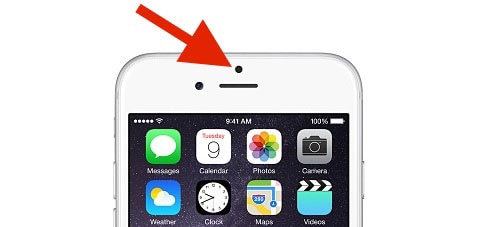
The proximity sensor stops unintended actions and saves a little battery life too.
Part 2. Why is my iPhone's proximity sensor broken?
As we have already suggested, Apple devices are very strong. But, as we have already acknowledged, malfunctions do still happen. The proximity sensor might fail for various reasons.
- Changing the screen on your iPhone – Screens get broken, need to be fixed usually by being replaced. This can result in a secondary problem with the proximity sensor. Basically, if you were to take everything out of the iPhone case, and lay it out on the table, you would wonder how it was possible to get it all back in there. What we are saying is that the parts of an iPhone are very small and need to be very precisely positioned. It is possible that in replacing the screen, the very precise position of the proximity sensor has been misaligned.
- A huge hit on a hard surface – We certainly do not recommend you test this, but we think the iPhone is a tough cookie. Most of us add a case and a screen protector, just to give ourselves a little more protection. Even then, damage does occur and, despite Apple’s best efforts, the real damage can often be internal to the device. Parts, like the proximity sensor, are manufactured to extremely high standards but can be broken.
- Manufacturer problem – Apple is one of the biggest companies in the world, with massive buying power and the capacity to demand high standards. However, that does not mean that they are 100% immune to faults. Technology does fail sometimes, and it has even been known for even an iPhone to be faulty at the time of purchase.
- System problem– All these systems are immensely complicated, and this includes the software, iOS, and apps. Sometimes when you update to iOS 16 or other iOS versions, or just in some quirk of normal operation, the iOS becomes corrupt and may need to be fixed.
You Might Find Them Useful:
Part 3. How to fix the iPhone Proximity Sensor issue
We have seen what the proximity sensor does and how it might become damaged. Sometimes, for whatever reason, it is just not convenient to go to a repair shop. Though we do advise you to be as careful as you can, we are going to give you some ideas regarding ways of fixing problems with the proximity sensor. Except for Solution 1 and Solution 2, other solutions may cause data loss, so you'd better back up your iPhone in advance.
Solution 1. Reboot the phone
It is a bit of an industry cliché. It is a cliché because it often works. Just sometimes, even big problems can be fixed with a simple reboot. If you find that the proximity sensor is not working, simply perform a reboot. Then, if at first, you do not succeed, try rebooting the phone, turning it off, and back on again, for a second time.
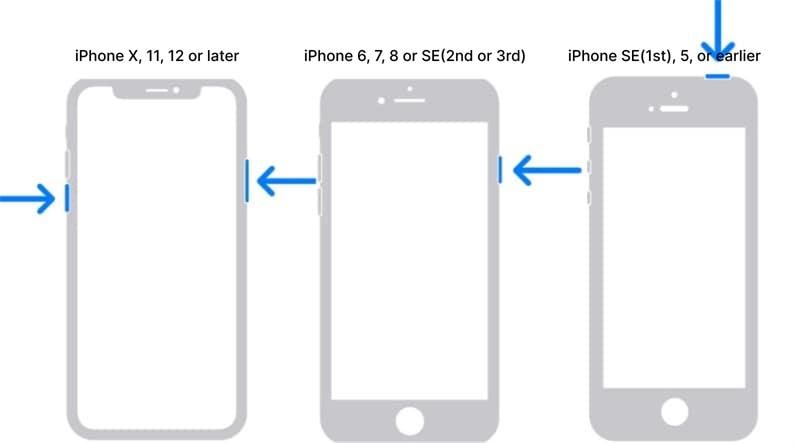
Simply turn off, then turn back on again.
Solution 2. Fix system errors
As we have noted, sometimes it is the software, not the hardware, which is the problem. The major software involved in the correct operation of your iPhone is the operating system. It is any one of the versions of iOS which runs your phone. We think Dr.Fone - System Repair (iOS) is one of the best tools as a companion for your iOS devices, your iPhone, iPad, or iPod Touch. Out tools can solve various iPhone problems, which might have been caused by software and system errors.
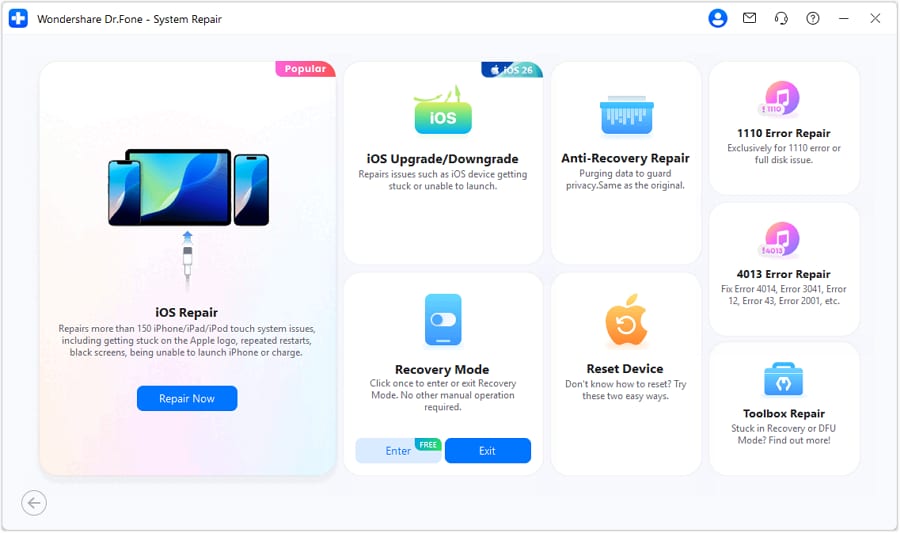

Dr.Fone - System Repair
Repair the iOS system to fix the iPhone proximity sensor issue without data loss.
- Safe, simple, and reliable.
- Fix with various iOS system issues like stuck in recovery mode, iPhone stuck on Apple logo, black screen, white screen of death, etc.
- Only fix your iOS to normal, no data loss at all.
- Fixes other iPhone errors and iTunes errors, such as error 4005, error 14, iPhone error 4013, error 1009, iTunes error 27, and more.
- Work for all models of iPhone, iPad, and iPod touch. Fully compatible with the latest iOS version.
Video guide: How to repair iOS system problems to fix the iPhone proximity sensor not working
Solution 3. Clean the display
It might seem ridiculously easy, but it is just possible that another very simple action might solve the problem. Remove your case, and remove any screen protector, and clean your iPhone thoroughly. A cloth for cleaning spectacles is one of the best things to use.
Check if the proximity sensor is working by making a call whilst stood in front of a mirror and see if the screen dims as you lift your iPhone to your ear. If it does, the proximity sensor is working. We know it seems too simple, but, just sometimes, things are.
Solution 4. Hard reset
This is really a more brutal version of the first solution. iPhone factory reset is a little more intense in its efforts to clear out the bugs to get everything properly straightened up and in the right place. All you need to do is follow the steps in the below screenshot. Sometimes this will be enough on its own to get the proximity sensor working.
Go to Settings > General > Transfer or Reset iPhone > Erase All Content and Settings > Continue
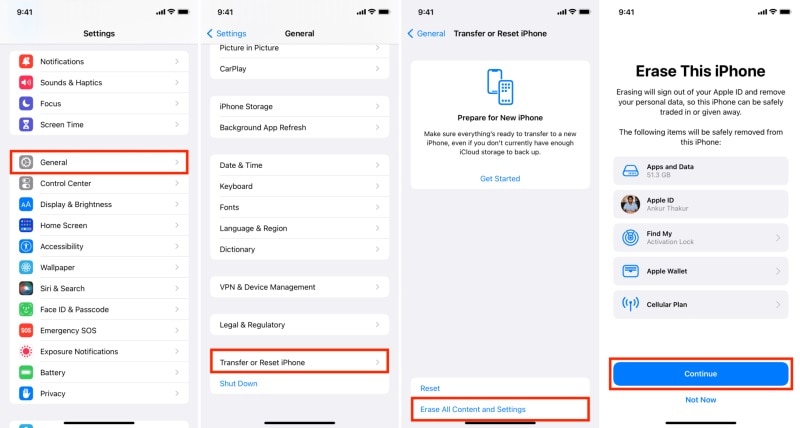
Or go to Settings > General > Reset > Erase All Content and Settings

Solution 5. Put iPhone in Recovery Mode to update iPhone
When facing persistent proximity sensor problems on your iPhone, using the Recovery Mode can help resolve software-related issues that might be causing the malfunction. This mode allows you to restore your device's firmware to its original state. Here is what you should do.
Step 1: Open iTunes (Wind or Mac Mojave and below) or Finder (Mac with macOS Catalina and above) on your computer.
Install the latest version of iTunes on your computer or open Finder. Connect your iPhone to the computer using a lightning cable.
Step 2: Put your iPhone into Recovery mode
For iPhone 8 or later:
- Press and quickly release the Volume Up button.
- Press and quickly release the Volume Down button.
- Press and hold the Side (or Power) button until the "Connect to iTunes" screen appears.

For iPhone 7 and iPhone 7 Plus:
- Press and hold the Volume Down button and the Side (or Power) button together.
- Continue holding both buttons until you see the "Connect to iTunes" screen on iPhone.
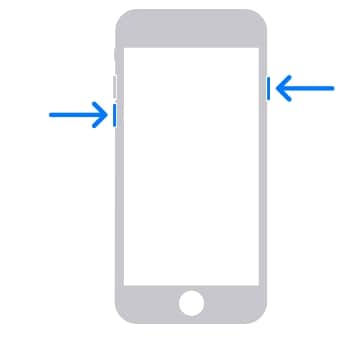
For iPhone 6s or earlier, iPod Touch (6th generation or earlier), or iPad with Home button:
- Press and hold the Home button and the Side (or Top) button together.
- Keep holding both buttons until the "Connect to iTunes" screen appears.

Step 3: Update your iPhone
On your computer, iTunes should recognize that your iPhone is in Recovery Mode and prompt you to update it. Click "Update" to reinstall the software without data loss. If you're using Finder on macOS Catalina or later, you'll see a similar message.
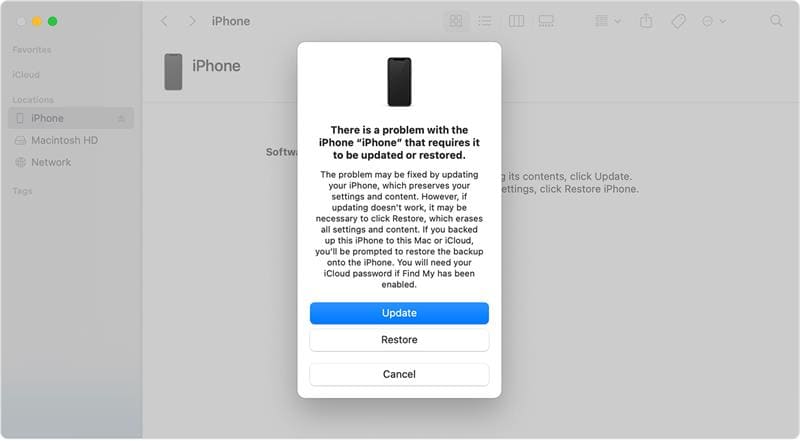
Solution 6. Do it yourself – align or change the proximity hold
This is for the brave, those with a steady hand and, probably, very sharp eyesight.
One part of the Proximity Sensor, the part which keeps it in the right place, properly aligned, is called the Proximity Hold. It is possible for it to become damaged, but it is much likely that it will need to be replaced if missing. Just sometimes, when the phone is being repaired, let’s say the screen is replaced, the Proximity Hold falls out without anyone noticing. Once the iPhone Proximity Hold is replaced or aligned correctly, it should fix the issue. You can also add a small strip of tape to the sensor to ensure that it does not fall out.

Solution 7. Problems with non-OEM screens.
Another one for those with the confidence and skills to approach it.
What happens with some of the aftermarket screens, which cost a great deal less than the original Apple offering, is that they let in too much light. If you disassemble the phone, then with great care, you can put some electrical tape over the screen, just where the sensor is, and cut two small holes to let some light, but not too much, through to the sensor.
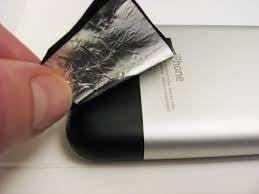
It can be very frustrating when your iPhone proximity sensor malfunctions. We really hope that we have been able to offer you some solutions.
Other iPhone problems you may encounter:
- iPhone won't turn on? - I Tried this Guide, And Even I Was Surprised!
- iPhone screen goes black? - 2 - 3x Faster Solution to Fix this issue
- Accidently locked your iPhone? - 4 Ways to Unlock iPhone without Passcode
4,624,541 people have downloaded it
iPhone Problems
- iPhone Hardware Problems
- 1. iPhone Keyboard Problems
- 2. iPhone Flashing Not Working
- 3. iPhone Not Detecting Sim Card
- 4. iPhone Sim Not Supported
- 5. Touch ID Not Working
- 6. iPhone Unable to Activate Touch ID
- 7. Fix iPhone Flashlight Greyed Out
- 8. iPhone Ear Speaker Test
- 9. iPhone Ear Speaker Not Working
- 10. iPhone Backlight
- 11. iPhone Proximity Sensor by Yourself
- 12. Replace iPhone Digitizer
- 13. Accessory May Not Be Supported
- iPhone Battery Problems
- 1. iPhone Battery Percentage Not Show
- 2. Replace iPhone Battery
- 3. iPhone Battery Problems
- 4. iPhone's Battery Drains Fast
- 5. iPhone Shuts Off with Battery Left
- 6. iPhone Overheating
- iPhone Button Problems
- 1. iPhone Home Button Not Working
- 2. iPhone Volume Buttons Not Working
- 3. iPhone Silent Switch Not Working
- 4. iPhone Power Button Stuck
- 5. iPhone Volume Button Stuck
- 6. iPhone Back Tap Not Working
- iPhone Charging Problems
- 1. iPhone Charging Port Not Working
- 2. iPhone Charging Slowly
- 3. iPhone Stops Charging
- 4. Wireless Charging Not Working
- 5. iPhone Not Charging
- 6. iPhone Stuck on Charging Screen
- iPhone Headphone Problems
- Apple Pencil and Watch Issues
- 1. Apple Pencil Double Tap Not Working
- 2. Apple Pencil Keeps Disconnecting
- 3. Apple Pencil Not Charging
- 4. Apple Pencil Not Connecting/Pairing
- 5. Apple Pencil Not Working
- 6. Apple Watch Not Pairing with iPhone
- 7. Apple Watch Stuck on Apple Logo
- Other iPhone Problems
- ● Manage/transfer/recover data
- ● Unlock screen/activate/FRP lock
- ● Fix most iOS and Android issues
- Repair Now Repair Now Repair Now















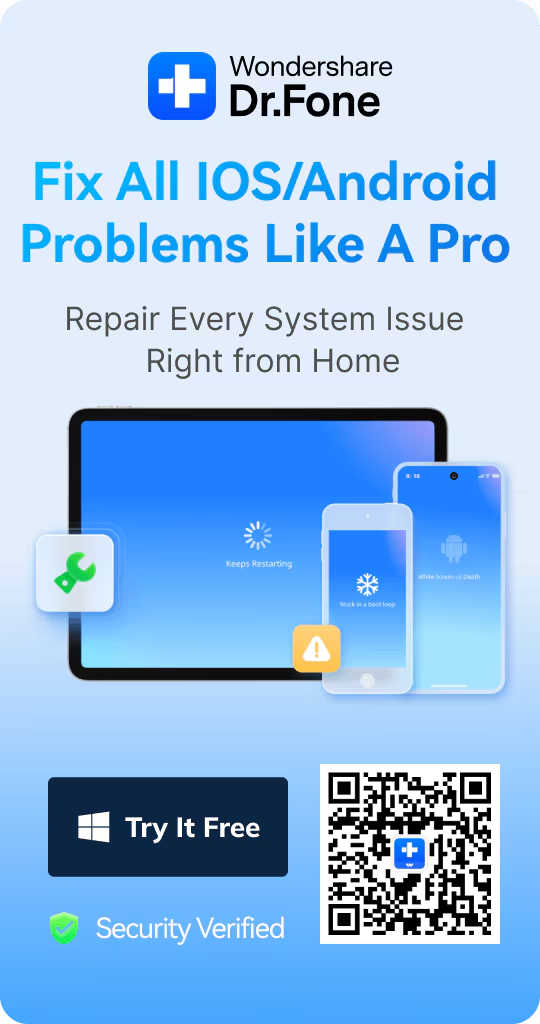

Alice MJ
staff Editor
Generally rated4.5(105participated)